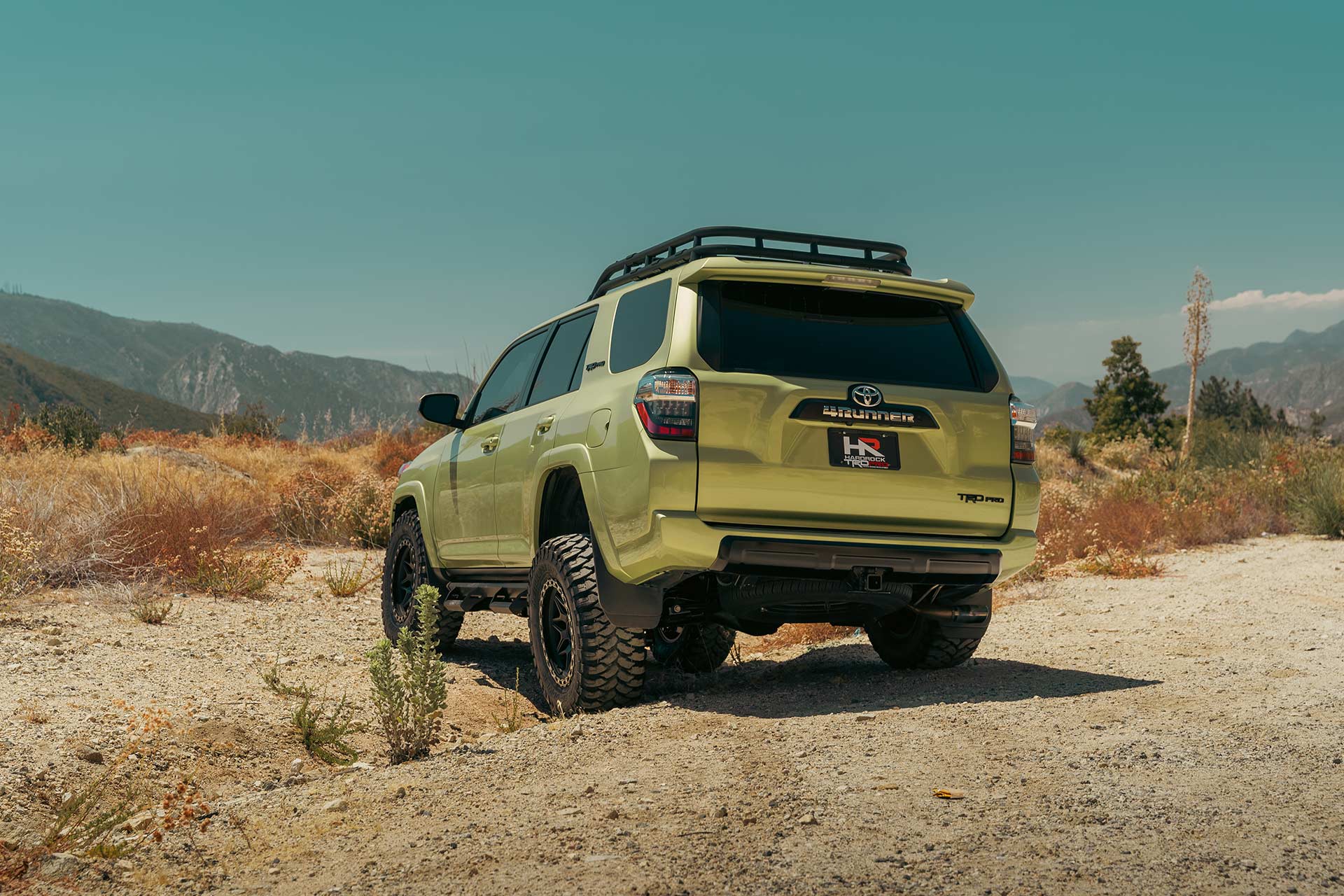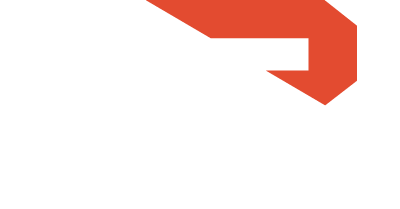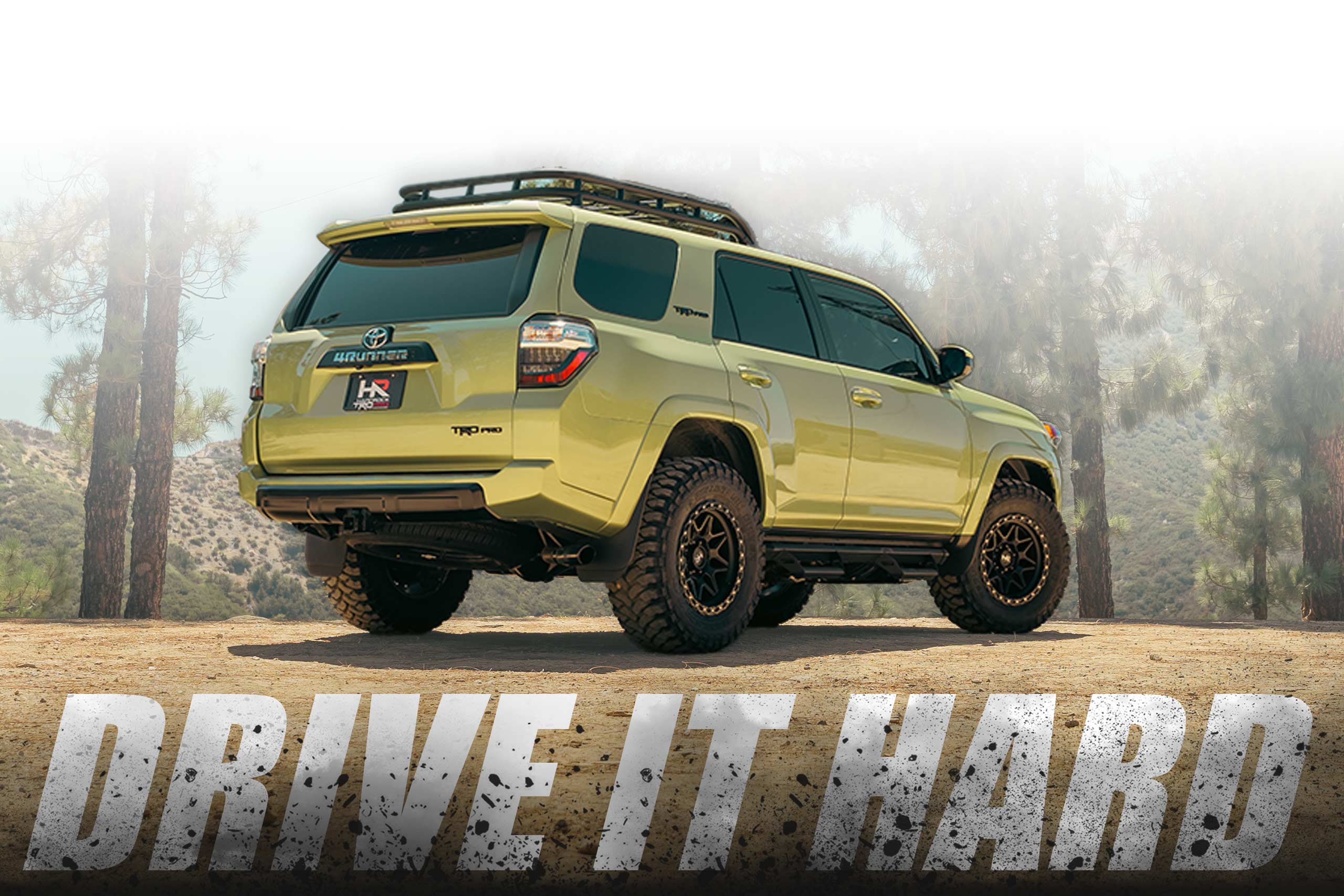
Toyota 4Runner Wheel Fitment Guide
The legendary Toyota 4Runner, a cornerstone in the off-road community since 1984, continues to captivate trail enthusiasts and outdoor adventurers with its proven capability and rugged DNA. Like any serious off-road machine, many 4Runner owners prioritize wheel and tire upgrades to enhance their vehicle’s trail-conquering abilities.
The current 4Runner generation comes in several distinctive trims, including the formidable TRD Pro and trail-ready TRD Off-Road, each featuring its own specific wheel and tire configurations. However, for those seeking to maximize their rig’s potential, upgrading to a 17-inch or 20-inch wheel package can transform both capability and aesthetics.
In this detailed fitment guide, we’ll explore the extensive testing and validation performed by Hardrock Offroad to ensure your 4Runner receives wheels that deliver both head-turning style and genuine off-road performance. Whether you’re maintaining a subtle OEM+ appearance with the factory suspension or planning an aggressive build with increased lift height, this fitment guide will walk you through selecting the perfect set of Toyota 4Runner wheels.
OEM Toyota 4Runner Wheel & Tire Fitment
| Generation | Wheel Size & Offset | Tire Size | Bolt Pattern | Bore |
|---|---|---|---|---|
| II (1989-1995) | 15×6 +0 | 225/75R15 | 6×139.7 (6×5.5) | 106.1mm |
| II (1989-1995) | 15×7 +8 | 31×10.50R15LT | 6×139.7 (6×5.5) | 106.1mm |
| II (1989-1995) | 16×8.5 +0 | 265/70R16 | 6×139.7 (6×5.5) | 106.1mm |
| III (1995-2002) | 15×7 +15 | 225/75R15 | 6×139.7 (6×5.5) | 106.1mm |
| III (1995-2002) | 16×7 +15 | 265/70R16 | 6×139.7 (6×5.5) | 106.1mm |
| IV (2003-2009) | 16×7 +30 | 265/70R16 | 6×139.7 (6×5.5) | 106.1mm |
| IV (2003-2009) | 17×7.5 +30 | 265/65R17 | 6×139.7 (6×5.5) | 106.1mm |
| IV (2003-2009) | 18×7.5 +25 | 265/60R18 | 6×139.7 (6×5.5) | 106.1mm |
| V (2009-2024) | 17×7 +15 | 265/70R17 | 6×139.7 (6×5.5) | 106.1mm |
| V (2009-2024) | 17×7 +4 | 265/70R17 | 6×139.7 (6×5.5) | 106.1mm |
| V (2009-2024) | 17×7.5 +15 | 265/70R17 | 6×139.7 (6×5.5) | 106.1mm |
| V (2009-2024) | 20×7 +15 | 245/60R20 | 6×139.7 (6×5.5) | 106.1mm |
| Generation | II (1989-1995) | II (1989-1995) | II (1989-1995) | III (1995-2002) | III (1995-2002) | IV (2003-2009) | IV (2003-2009) | IV (2003-2009) | V (2009-2024) | V (2009-2024) | V (2009-2024) | V (2009-2024) |
|---|---|---|---|---|---|---|---|---|---|---|---|---|
| Wheel Size & Offset | 15×6 +0 | 15×7 +8 | 16×8.5 +0 | 15×7 +15 | 16×7 +15 | 16×7 +30 | 17×7.5 +30 | 18×7.5 +25 | 17×7 +15 | 17×7 +4 | 17×7.5 +15 | 20×7 +15 |
| Tire Size | 225/75R15 | 31×10.50R15LT | 265/70R16 | 225/75R15 | 265/70R16 | 265/70R16 | 265/65R17 | 265/60R18 | 265/70R17 | 265/70R17 | 265/70R17 | 245/60R20 |
| Bolt Pattern | 6×139.7 | 6×139.7 | 6×139.7 | 6×139.7 | 6×139.7 | 6×139.7 | 6×139.7 | 6×139.7 | 6×139.7 | 6×139.7 | 6×139.7 | 6×139.7 |
| Bore | 106.1mm | 106.1mm | 106.1mm | 106.1mm | 106.1mm | 106.1mm | 106.1mm | 106.1mm | 106.1mm | 106.1mm | 106.1mm | 106.1mm |
Top Toyota 4Runner Wheels
Understanding Offset & Backspacing
Wheel offset is a number, either positive or negative, that determines the distance between the wheel’s center-line and the mounting surface or back pad of the wheel. There are a lot of variables in choosing the right offset for your 4Runner; such as clearance. When you’re mounting an aftermarket wheel, you want to ensure that the wheel isn’t rubbing or scrubbing against the fender, fender liner or any part of the suspension when at full lock to either side or when in the neutral position. One of the most common clearance issues 4Runner drivers face is rubbing on the plastic fender liners, OEM mud flaps and in extreme cases, suspension components.
In short, there are three different offsets: positive, zero and negative. Positive offset is when the wheel is sitting closer to the suspension, zero is dead center, and negative offset is when the wheel is further away from the suspension.
Toyota 4Runner Wheels: Fitments
Below you’ll see all of the fitments Hardrock Offroad recommends for your Toyota 4Runner from all generations, as they share very similar chassis’. Please note that some of these fitments may require modifications such as trimming and cutting. However, we’ve done our best to only include fitments that require none or very little modifications.
| Wheel Size & Offset | Wheel Model | Suggested Tire Sizes |
|---|---|---|
| 17×9 +1 | H105, H106, H107, H108, H109 | 33×12.50R17LT 35×12.50R17LT 285/70R17 285/75R17 315/70R17 |
| 17×9 -12 | H105, H106, H107, H108, H109 | 33×12.50R17LT 35×12.50R17LT 285/70R17 285/75R17 315/70R17 |
| 20×9 +0 | H502, H503, H504, H700, H704, H705, H707, H708, H709, H711, H712, H713, H714 | 33×12.50R20LT 35×12.50R20LT 285/60R20 315/60R20 |
| 20×9 +20 | H713, H714 | 33×12.50R20LT 35×12.50R20LT 285/60R20 315/60R20 |
| 20×10 -19 | H105, H107, H108, H109, H502, H503, H504, H505, H506, H507, H508, H700, H704, H705, H707, H708, H709, H710, H711, H712, H713, H714 | 33×12.50R20LT 35×12.50R20LT 315/60R20 |
| 20×12 -44 | H502, H503, H504, H505, H506, H507, H508, H700, H704, H705 | 33×12.50R20LT 35×12.50R20LT 315/60R20 |
| 20×12 -51 | H503, H707, H708, H709, H710, H711, H712, H713, H714 | 33×12.50R20LT 35×12.50R20LT 315/60R20 |
| Wheel Size & Offset | 17×9 +1 | 17×9 -12 | 20×9 +0 | 20×9 +20 | 20×10 -19 | 20×12 -44 | 20×12 -51 |
|---|---|---|---|---|---|---|---|
| Wheel Model | H105, H106, H107, H108, H109 | H105, H106, H107, H108, H109 | H502, H503, H504, H700, H704, H705, H707, H708, H709, H711, H712, H713, H714 | H713, H714 | H105, H107, H108, H109, H502, H503, H504, H505, H506, H507, H508, H700, H704, H705, H707, H708, H709, H710, H711, H712, H713, H714 | H502, H503, H504, H505, H506, H507, H508, H700, H704, H705 | H503, H707, H708, H709, H710, H711, H712, H713, H714 |
| Suggested Tire Sizes | 33×12.50R17LT 35×12.50R17LT 285/70R17 285/75R17 315/70R17 | 33×12.50R17LT 35×12.50R17LT 285/70R17 285/75R17 315/70R17 | 33×12.50R20LT 35×12.50R20LT 285/60R20 315/60R20 | 33×12.50R20LT 35×12.50R20LT 285/60R20 315/60R20 | 33×12.50R20LT 35×12.50R20LT 315/60R20 | 33×12.50R20LT 35×12.50R20LT 315/60R20 | 33×12.50R20LT 35×12.50R20LT 315/60R20 |
Wheel Construction
In recent years, new types of wheel construction have been introduced into the off-road wheel market. In addition to offset, backspacing and aesthetic considerations, now you can choose what type of wheel construction you prefer. The most common type of wheels are cast wheels. As the name suggests, cast wheels are molded using molten aluminum. The next step up are flow formed wheels, which follow the same process as cast wheels, except the barrel has been spun, stretched and compressed to shape. Then there are forged wheels, which are completely machined from one block of aluminum. There are benefits and disadvantage to all three types of wheels, however most off-road trucks, Jeeps and SUVs utilize cast wheels.
Which Wheels Will Fit My Toyota 4Runner?
Contact our Toyota 4Runner wheel experts to see which diameter, width and offset best suit your needs
"*" indicates required fields
Frequently asked questions
What wheel sizes fit my Toyota 4Runner?
Yes, we offer multiple wheel sizes specifically designed for Toyota 4Runners. Most 4Runner owners prefer our 17x9 or 20x9 options for the perfect balance of performance and style. For 5th generation 4Runners (2009-2024), we also offer more aggressive 20x10 and 20x12 options for a bolder stance. All our fitments have been extensively tested to ensure they work flawlessly with your specific 4Runner model, whether you're running stock suspension or have a lift kit installed.
What's the difference between positive and negative wheel offset for my 4Runner?
Wheel offset is crucial for proper fitment and appearance. It determines how your wheels sit relative to your suspension. Positive offset means the wheel sits closer to the suspension components, zero offset centers it perfectly, and negative offset positions the wheel further outward for a wider stance. Many 4Runner enthusiasts prefer our wheels with slight negative offset (like -12mm) for that aggressive look without excessive rubbing. Just remember that the more negative your offset, the further your wheels stick out, which affects both appearance and clearance.
How can I prevent tire rubbing when upgrading my 4Runner's wheels and tires?
Tire rubbing can be avoided with the right combination of wheels, tires, and sometimes minor modifications. For a no-modification setup, our 17x9 +1 or 20x9 +0 wheels with tires up to 33" typically work without issues. If you do experience rubbing, the most common contact points are plastic fender liners and mud flaps. Simple trimming in these areas often solves the problem. For more aggressive setups with our 20x12 -44 wheels, you might need a 2-3" lift kit and possibly a body mount chop for full clearance. We've thoroughly tested all our wheel fitments on 4Runners to minimize these headaches.
What's the bolt pattern for Toyota 4Runner wheels?
All Toyota 4Runners use a 6×139.7mm bolt pattern (sometimes written as 6×5.5 inches) with a 106.1mm center bore. Every Hardrock Offroad wheel is engineered to these exact specifications, ensuring perfect fitment regardless of your 4Runner's generation. This consistency across all model years makes finding the right Hardrock wheel straightforward and hassle-free.
What tire sizes work best with Hardrock Offroad wheels on a 4Runner?
For our popular 17x9 wheels, we recommend 33×12.50R17LT, 285/70R17, or 285/75R17 tires for a balanced upgrade that improves capability without excessive rubbing. With our 20-inch wheels, we suggest 33×12.50R20LT, 285/60R20, or 315/60R20 depending on your specific wheel width and offset. For more extreme builds, 35×12.50R17LT and 35×12.50R20LT options perform excellently with appropriate suspension modifications. Our tire recommendations come from extensive real-world testing with 4Runners.
Which Hardrock Offroad wheel models fit my specific 4Runner generation?
We've made this easy for you! Our comprehensive fitment guide details exactly which wheel models are perfect for each 4Runner generation. For all generations, our H105-H109 models in 17x9 sizing work beautifully with the appropriate offset. For 5th gen 4Runners (2009-2024), our H502, H503, H504, H700 series, and H704-H714 models in 20x9 sizing deliver perfect fitment. Still not sure? Contact our 4Runner wheel experts, and we'll help you select the ideal set for your specific build.



